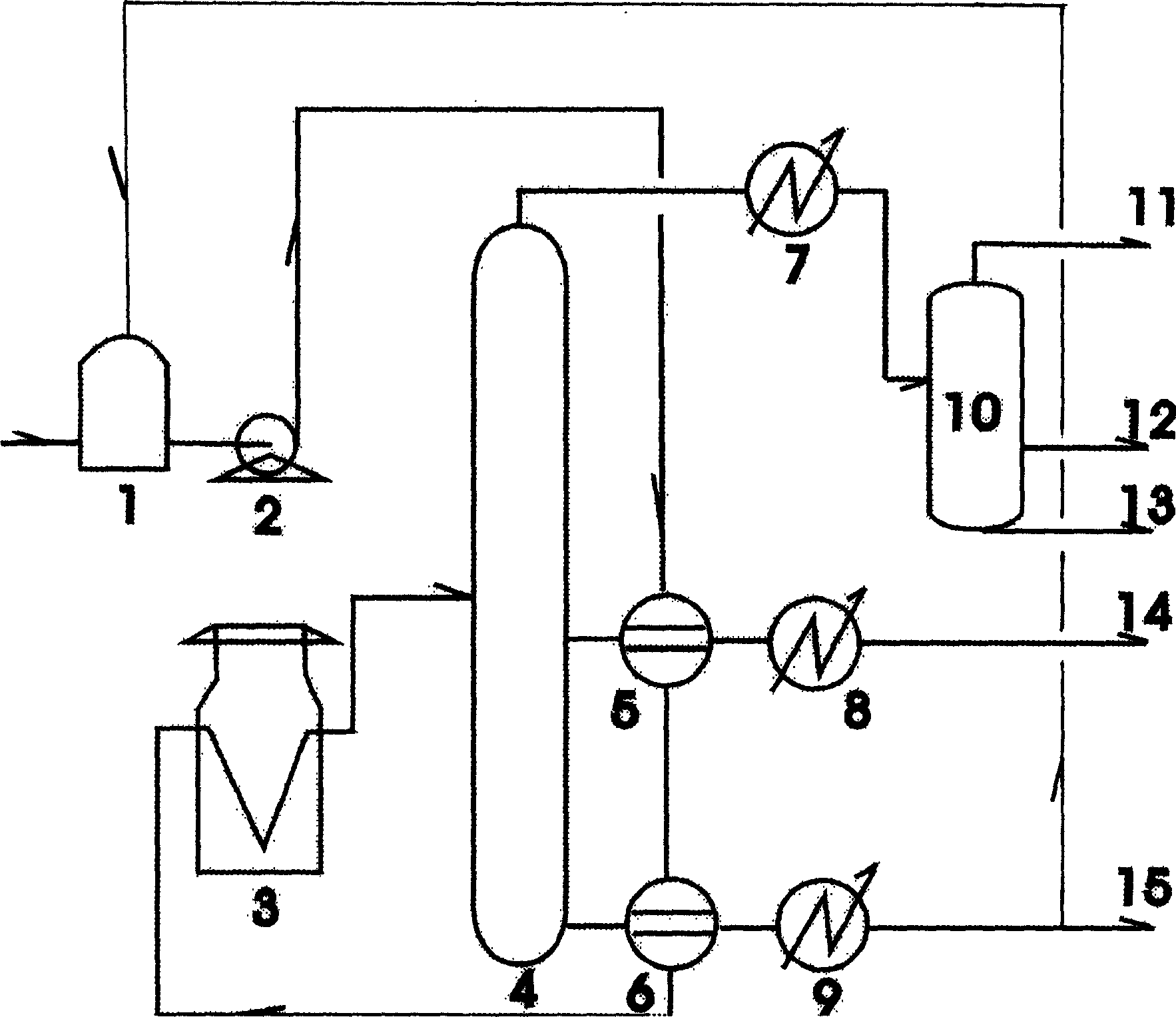Method for continuous producing fuel oil from deposed lubricant
A waste lubricating oil and fuel oil technology, which is applied in lubricating compositions, petroleum industry, cracking, etc., can solve problems such as equipment coking, uneconomical methods, and complicated processing techniques, so as to reduce equipment corrosion, improve technical standards, and simplify The effect of the production process
- Summary
- Abstract
- Description
- Claims
- Application Information
AI Technical Summary
Problems solved by technology
Method used
Image
Examples
Embodiment 1~5
[0049] The embodiment is divided into three steps: one is to pretreat the raw materials; the other is to add three doses of mixed raw materials; the third is to react and separate the process.
[0050] The first step is to heat the raw material at a constant temperature and settling for dehydration and impurity removal. The composition of the raw oil used in the examples is shown in Table 1.
[0051] Table 1: Composition and dehydration and impurity removal conditions of the raw material oil used in Examples 1 to 5
[0052] Example 1
Example 2
Example 3
Example 4
Example 5
Raw oil variety
Wt%
Wt%
Wt%
Wt%
Wt%
waste machinery oil
30
30
20
20
30
waste transformer oil
30
15
30
20
15
waste internal combustion engine oil
40
40
40
45
45
waste washing oil
-
15
10
15
10
Dehydratio...
PUM
| Property | Measurement | Unit |
|---|---|---|
| particle size | aaaaa | aaaaa |
Abstract
Description
Claims
Application Information
 Login to View More
Login to View More - R&D
- Intellectual Property
- Life Sciences
- Materials
- Tech Scout
- Unparalleled Data Quality
- Higher Quality Content
- 60% Fewer Hallucinations
Browse by: Latest US Patents, China's latest patents, Technical Efficacy Thesaurus, Application Domain, Technology Topic, Popular Technical Reports.
© 2025 PatSnap. All rights reserved.Legal|Privacy policy|Modern Slavery Act Transparency Statement|Sitemap|About US| Contact US: help@patsnap.com

